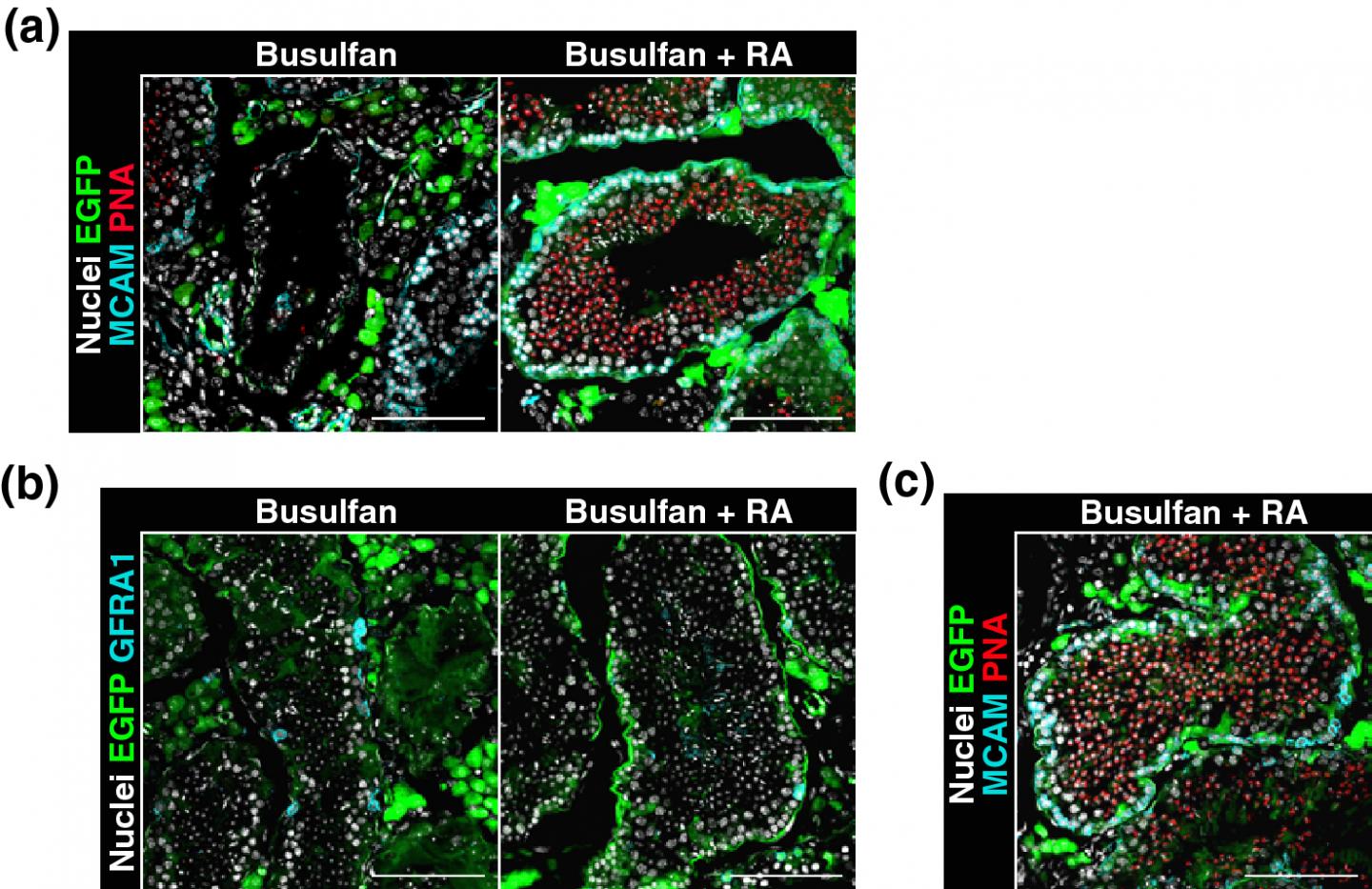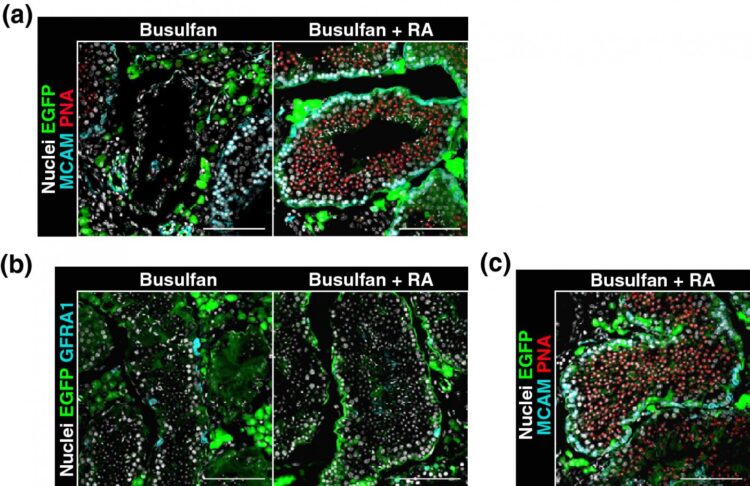
Credit: Copyright © 2020, Springer Nature, licensed under cc by 4.0
One in fifty births in Japan are said to be through in vitro fertilization, and many couples remain unable to conceive for reasons unknown. Infertility is also an undesired side-effect of lifesaving cancer treatment in childhood.
Akihiro Tsuchimoto, Masaaki Tone and Seiji Takashima of Shinshu University transplanted testis tissue to observe its effectiveness as a treatment for male infertility. When just the sperm stem cells are transplanted, the germ cells of the recipient (individual who is being treated) needs to be depleted to ensure engraftment and growth of the transplanted stem cells. However, contrary to their expectation, depletion of recipient germ cells actually worsened sperm production in transplanted tissues. They set out to find out why.
The reason for the negative prognosis in testis tissue transplantation was due to the depletion of germ cells which contribute to retinoic acid (RA) synthesis in the testes. In this context, they succeed in ameliorate donor spermatogenesis by RA administration in recipients to produce healthy offspring via intracytoplasmic sperm injection, a typical method in assisted reproductive technology in humans.
Although RA can produce teratogenicity when administered to pregnant mothers, an adverse effect was not observed during this treatment, suggesting that testis tissue transplantation in combination with RA administration on demand is an effective method for preserving/recovering male fertility. The researchers continue their work to preserve and restore male fertility. Testicular tissue transplantation should be uncomplicated to put into application, so the researchers are hopeful. There are still parameters that need to be considered and investigated to be put to use in reproductive technology.
For more information please read, Germ cell depletion in recipient testis has adverse effects on spermatogenesis in orthotopically transplanted testis pieces via retinoic acid insufficiency.
###
This research was funded by JSPS KAKENHI (JP16H05046), The Sumitomo Foundation (140785 and 190304), The Naito Foundation (4342-110), The Ito Foundation (Ken 16), The Hokuto Foundation for Bioscience, the Japan Health Foundation (2016-3-145), the Mochida Memorial Foundation for Medical and Pharmaceutical Research, The Ichiro Kanehara Foundation for the Promotion of Medical Sciences and Medical Care, The Uehara Memorial Foundation, the Suzuken Memorial Foundation, the Takeda Science Foundation, Inamori Foundation, and Shinshu Medical Science Promotion Association.
Media Contact
Hitomi Thompson
[email protected]
Related Journal Article
http://dx.





